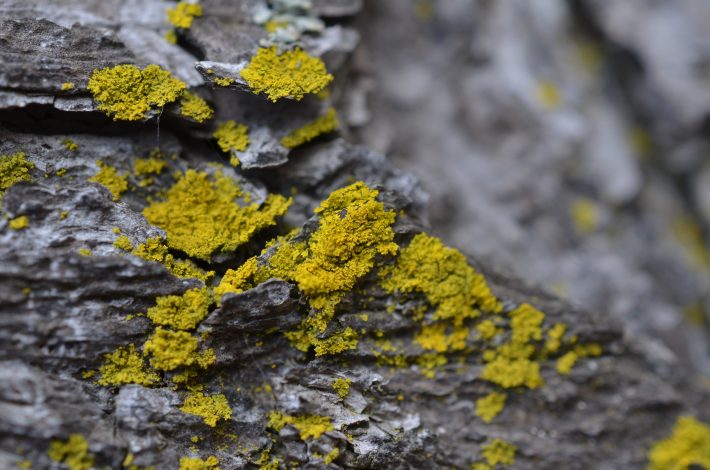Press Release: Lichens and the “health” of ecosystems
University of Lisbon Press Release
New research published in Methods in Ecology and Evolution shows that it is possible to integrate the results obtained with the most widely used methods to evaluate the “health” of ecosystems at the global scale using lichens. This represents a fundamental step for this indicator to be considered at the global scale and included in the list of indicators of the United Nations.

Lichens have long been successfully used by scientists as ecological indicators – a kind of environment health thermometer. These complex organisms – the yellow or green taints we often see on the surface of tree trunks – are very sensitive to pollution and changes in temperature and humidity. Evaluating how many lichens, of what kind, and their abundance in a certain ecosystem allows scientists to understand the impact that problems like climate change or pollution have on those ecosystems.
Currently, two methods are predominantly used at the global scale to assess ecosystems “health” using lichens: the European and the North American (EUA). Because they are based on quite different rules to register lichen diversity in a certain place, their results cannot (or could not) be integrated at the global scale.
The authors of the study now published demonstrate for the first time that it is possible to integrate the results obtained by both methods. So, from now on, it is possible to study the global pattern of lichen diversity and, consequently, ecosystems conservation status.
The study resulted from the collaboration between researchers from cE3c – Centre for Ecology, Evolution and Environmental Changes, the Instituto Superior Técnico, University of Aveiro and the US Forest Services. The researchers used both methods to study 28 sites located in the US in ecosystems with very different characteristics in terms of pollution levels, temperature and humidity. Because both methods have such different rules, the absolute values obtained by each are naturally very different. However, the researchers have shown that the interpretation of both sets of values is the same, and they developed a way to integrate the results of them both.
Paula Matos, cE3c researcher and first author of the study, explains: “it would be a herculean task to convince scientists from Europe and the US to adopt only one of the methods, or even to develop a new universal method. And we would still have a problem to analyse results from the past. “ This study presents itself as a way to solve this problem, and simultaneously fulfils a necessity expressed by the United Nations Conventions on Biological Diversity (UNCBD), Climate Change (UNCCC) and to Combat Desertification (UNCCD) to develop a set of global indicators to assess the impacts of global change on ecosystems.
“There is a need to assess the effects of global change and that can only be done if we have biomonitoring results at a large scale”, explains Paula Matos. The following steps will be to propose this indicator to the United Nations and to start analysing in an integrated way retrospective and future trends of the effects of global change on ecosystems at the global level.
To find out more, read our Methods in Ecology and Evolution article ‘Tracking global change using lichen diversity: towards a global-scale ecological indicator’. This article will be freely available for a limited time.
Like what we stand for?
Support our mission and help develop the next generation of ecologists by donating to the British Ecological Society.